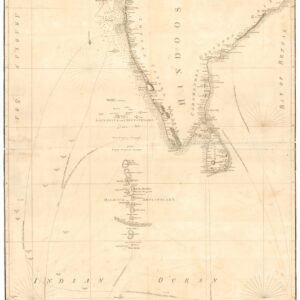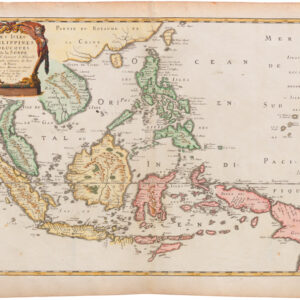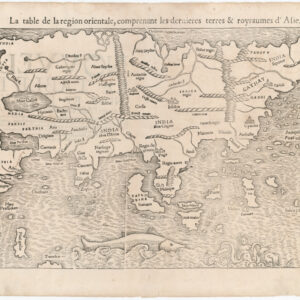Stunning double-sheet nautical chart of Australia, compiled by the French Hydrographic Service.
[Australia in 2 Sheets] Ocean Pacifique.
Out of stock
Description
A monumental and modern maritime chart of Australia and its surrounding waters, produced in 1895 by the French Service Hydrographique de la Marine.
This two-sheet chart of Australia was surveyed, produced, and printed shortly before the dawn of the 20th century. On the left side, we have Australia’s Indian Ocean littoral, with parts of Indonesia and New Guinea included at the top of the map. On the right side, the eastern chart depicts Australia’s Pacific littoral, extending into the enormous archipelagos of Oceania. In this eastern half, we find island groups like the Solomons, the New Hebrides, New Caledonia, and much of New Zealand.
Compiled as nautical charts, we see the careful markings of depth soundings. These are particularly prevalent near the coast, but even in open waters, the French marine was clearly both adamant and systematic in taking consistent measurements. As is expected of an official hydrographic map from this era, the sheets are equipped with proper boundaries of latitude and longitude, corrected to take any recently discovered anomalies into account. Similarly, we find modern versions of rhumb lines delineating the declination of longitudes along the globe’s surface.
It is clear that place names along the coast have been updated and reviewed to align with the latest developments and observations. Everything, from small capes and coves to harbors, inlets, and river deltas, has been meticulously drawn onto the map and labeled. Further inland, the labels decrease, but as anyone familiar with Australia knows, so does the density of settlement. We note that the ubiquitous delineations of rivers, lakes, and other internal waterways are among the interior or terrestrial elements.
Census
This two-sheet nautical chart of Australia was compiled by Er. Dumas Vorzet, who was working for the French Government’s Service Hydrographique de la Marine. The sheets were hand-colored after printing, adding an extra layer of information and making them all the more visually striking.
The longitudinal and latitudinal graticules have been effectively colored in a golden yellow and bright red, while the interior is more subdued. Australia is easily distinguishable from surrounding nations using the simple color shading of the landmasses. More importantly, it highlights particular coastal stretches in yellow – both in Australia and the surrounding islands. These likely indicate difficult sailing conditions and the need for a local pilot.
The map sheets were printed and sold individually at 2 francs per sheet. Among the main customers for maps issued by the SERVICE HYDROGRAPHIQUE DE LA MARINE was the French Navy, merchant vessels from French-speaking nations, private boaters, and others sailing on Australia in the late 19th century.
Cartographer(s):
The Service Hydrographique de la Marine was a French governmental agency responsible for hydrographic surveys and the production of nautical charts. Established in the 18th century, it played a vital role in maritime navigation and safety by providing accurate maps and data about the sea and coastal areas.
This organization, which can be translated as the “Naval Hydrographic Service,” was tasked with charting the seas, including the depth of waters, the location of hazards, and other critical information necessary for safe maritime navigation. It was an important part of France’s efforts to improve and maintain its naval capabilities, especially during the age of exploration and colonial expansion.
The work done by this service was crucial for explorers, merchants, and naval vessels, as it allowed them to navigate more safely and efficiently. The accurate charts and maps produced by the Service Hydrographique de la Marine were used not only by French sailors but also had a broader impact on global navigation and cartography. Over time, similar hydrographic services were established in other countries, reflecting the growing importance of systematic and scientific approaches to oceanic mapping.
Condition Description
Two sheets, unjoined. Wear and chips along edges. Nice, thick paper. Watermark for Service Hydrographique in bottom margin.
References




![[Pair of views] Rade et Ville de Sincapour & Rade de Sincapour prise de la maison du Gouverneur](https://neatlinemaps.com/wp-content/uploads/2021/03/NL-00896-harbor_Thumbnail-300x300.jpg)